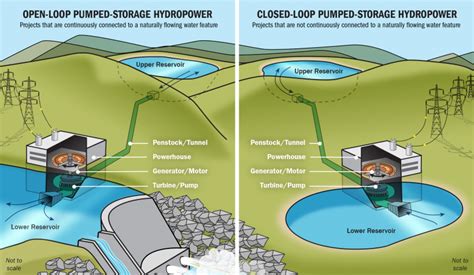Pumped-storage hydroelectricity (PSH) serves as a pivotal piece in the complex puzzle of modern energy systems, particularly as we navigate the global shift towards renewable energy. At its core, PSH involves pumping water from a lower reservoir to a higher one when electricity demand and prices are low, and letting it flow back down to generate electricity when demand peaks. While the engineering behind this system is a remarkable feat, the path to its widespread adoption is littered with political, economic, and environmental challenges. This article dives deep into the latest developments, controversies, and multifaceted aspects surrounding PSH projects, using key insights from various narratives to create a holistic picture.
One cannot discuss PSH without acknowledging its intertwined relationship with politics. The Snowy 2.0 project in Australia provides a perfect case study of how PSH projects can become political hotbeds. Originally budgeted at a fraction of its now projected cost, Snowy 2.0 has been a battleground between advocates of coal, gas, and renewable energy investments. Engineering setbacks, such as tunnel boring issues, have only exacerbated its delays, igniting fierce debate over whether the massive financial outlays could be better spent on other renewable technologies like solar, wind, and large-scale batteries. The political tug-of-war is evident as the Queensland proposal at Kidston also risks becoming entangled in similar controversies, potentially stalling or reducing its scale altogether.
The situation in New Zealand offers another example of the perilous terrain PSH projects must navigate. The Onslow pumped hydro scheme, initially touted as a significant addition to New Zealand’s renewable energy arsenal, faced its demise at the hands of a new government. Critics argued that the $16 billion price tag, extended approval timeframes, and potential environmental hurdles were too high a barrier. However, advocates questioned how such an endeavor could allegedly hinder the growth of renewable energy. They argued that the ability of PSH to store renewable energy could, in fact, be a cornerstone of reaching climate goals. The project’s suspension highlights how changes in political climate can dramatically affect the trajectory of large-scale PSH initiatives.
Economically, the comparison between PSH and other energy storage methods, such as lithium-ion batteries, brings additional perspectives. As battery costs continue to fall, skeptics argue that investments are better made in technologies that offer quicker returns on investments and promise scalability without significant geographical constraints. For instance, Tesla’s Megapack batteries are cited as a competitive alternative, with costs trending down due to economies of scale. In contrast, PSH projects require specific topographical conditions that are not universally available, thus driving up the initial capital expenditure.
Despite these challenges, PSH has certain unique advantages that cannot be overlooked. It is unparalleled in ‘black start’ events—instances where the power grid needs a reboot. Furthermore, PSH typically has a longer lifespan compared to batteries, which suffer from wear and performance degradation over time. Energy123 on Hacker News points out that while lithium-ion batteries are excellent for short-term storage (less than 10 hours), PSH fills a niche for energy storage extending beyond this timeframe. This long-term reliability makes it especially suited for wind energy storage, which often sees multi-day surpluses and droughts, unlike solar energy, which is relatively more predictable and stable on a daily basis.
Additionally, there are innovative undertakings aiming to maximize the utility of PSH in various contexts. Snowmaking reservoirs at ski resorts, for instance, have existing infrastructure that can be adapted for PSH, offering a form of seasonal grid support. Similar adaptations are observed in projects like the Western Sydney Pumped Hydro Project, which leverage existing infrastructures like Lake Burragorang and old industrial sites to establish cost-effective energy storage solutions. These efforts demonstrate the potential of hybrid systems that combine recreational, industrial, and energy storage applications.
In conclusion, the story of PSH is one of both promise and peril, reflecting the broader complexities of transitioning to a more sustainable energy future. The political, economic, and environmental dimensions of PSH projects must be carefully navigated to unlock their full potential. While battery technology continues to evolve and offer stiff competition, the inherent advantages of pumped hydro—particularly in terms of long-term storage capability and crisis resilience—ensure it retains a valuable role in the renewable energy landscape. Policymakers and industry leaders must work together to reconcile these diverse aspects and forge pathways that make the most of PSH, troves of renewable battery power, and beyond for a resilient, sustainable, and more energy-secure future.


Leave a Reply